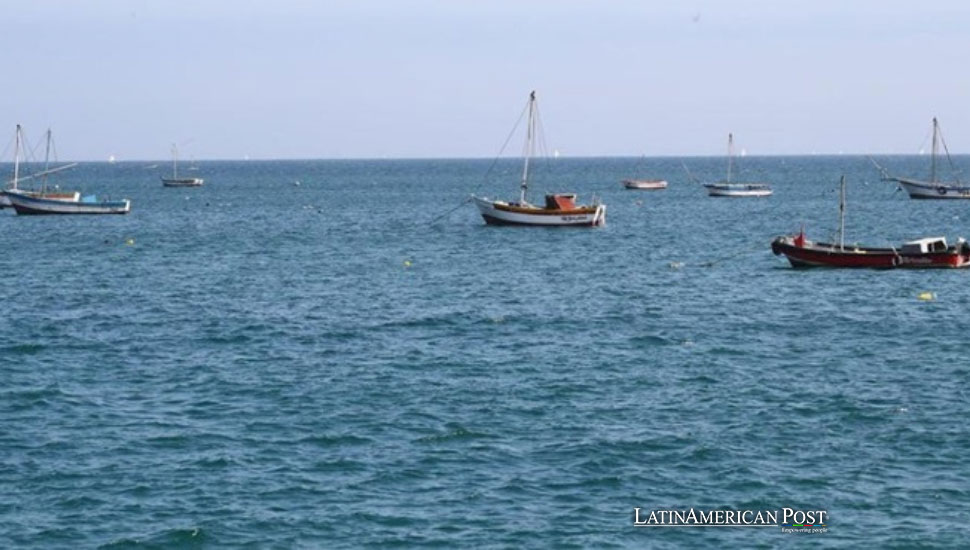Peru’s New Marine Reserve Supports Sustainable Fishing and Economic Growth

Peru establishes the Mar Tropical de Grau National Reserve to protect marine biodiversity and stimulate economic recovery through sustainable fishing practices.
Peru has established the Mar Tropical de Grau National Reserve in a maritime zone bordering Ecuador to conserve natural resources and stimulate economic recovery. This initiative, announced in April, aims to promote sustainable fishing practices while preserving the region’s rich marine biodiversity.
“We have promoted this creation to conserve our natural resources and marine fauna and carry out responsible fishing as part of our country’s economic recovery,” stated Environment Minister Juan Carlos Castro in an official communiqué. This reserve represents a critical step in ensuring responsible fishing within the framework of Peru’s economic recovery efforts.
During a recent visit to the fishing village of Cabo Blanco in northern Piura, Minister Castro met with local representatives to discuss the sustainable exploitation of hydrological resources. This engagement underscores the government’s commitment to involving local communities in conservation efforts and ensuring sustainable practices benefit those who rely on fishing for their livelihoods.
Minister Castro, alongside members of the Ministry of Housing, also attended a meeting with officials from the coastal district of Los Órganos. The focus was reviewing progress in water supply projects and sustainable tourism initiatives in the area. These projects are vital for ensuring that local communities protect their natural resources and derive economic benefits from them.
Unique Ecosystem at the Heart of Conservation
The Ministry of Environment (Minam) has underscored the unique nature of the Mar Tropical de Grau National Reserve. This reserve is a convergence of two distinct marine ecosystems: the warm waters of the Eastern Tropical Pacific, originating in Mexico and extending to northern Peru, and the nutrient-rich cold waters of the Humboldt system. The ministry has noted that this unique ecosystem is a haven for humpback whales giving birth, manta rays, and various species of sharks and sea turtles, making it a significant area of the Pacific.
The Mar Tropical de Grau National Reserve covers an expanse of 115,675.89 hectares, making it one of Peru’s most biodiverse coastal regions. Situated off the northern departments of Tumbes and Piura, adjacent to the Ecuadorian border, the reserve plays a crucial role in sustaining the marine life integral to the region’s ecological balance and economic vitality.
Economic and Environmental Impact
Announcing the creation of the reserve, Minister Castro hailed it as “an important milestone” for protecting an ecosystem that constitutes 1.5% of Peru’s tropical marine area and 0.14% of the country’s total marine area. The reserve is a vital environmental asset and a critical economic resource. It supports one of the primary food supply zones for the country, with 24 of the 35 main bony fish species landed by the Peruvian artisanal fishing fleet originating from Piura and Tumbes.
The Mar Tropical de Grau National Reserve is not just an environmental asset, but also a critical economic resource. It directly benefits over 9,500 artisanal fishers and is expected to generate approximately 18 million soles annually (around $4.74 million) from whale-watching activities. The reserve also provides additional revenue from food provision services, recreation, and tourism, showcasing its multifaceted economic potential.
Establishing the Mar Tropical de Grau National Reserve aligns with a broader trend in Latin America toward environmental conservation and sustainable resource management. This initiative reflects the region’s growing recognition of balancing economic development with ecological preservation. Latin American countries, rich in biodiversity, are increasingly adopting measures to protect their natural heritage while fostering sustainable economic growth.
Peru’s proactive approach in establishing the Mar Tropical de Grau National Reserve sets a model for other Latin American nations. By integrating conservation efforts with economic strategies, Peru demonstrates how environmental protection can drive economic resilience and sustainability. The success of this reserve could inspire similar initiatives in the region, reinforcing Latin America’s commitment to preserving its unique ecosystems.
Looking to the Future
The creation of the Mar Tropical de Grau National Reserve marks a significant milestone in Peru’s efforts to conserve marine ecosystems and promote sustainable use of natural resources. Proposed by the government in September of the previous year, the reserve aims to mitigate the impacts of the climate crisis and ensure the long-term viability of Peru’s rich marine biodiversity.
As Peru continues to develop and implement conservation strategies, the involvement of local communities, a source of pride and responsibility, remains crucial. Ensuring these communities benefit directly from conservation efforts will be critical to the reserve’s success. This approach fosters a sense of ownership and responsibility among local populations, enhancing the sustainability of conservation initiatives.
The reserve’s establishment also highlights the importance of international cooperation, a testament to our shared responsibility, in addressing environmental challenges. Bordering Ecuador, the reserve underscores the need for collaborative efforts between neighboring countries to protect shared marine resources. Such collaboration is essential for addressing the transboundary nature of environmental issues and ensuring the effective conservation of aquatic ecosystems.
Peru’s establishment of the Mar Tropical de Grau National Reserve is a testament to the country’s commitment to sustainable development and environmental conservation. This initiative protects a unique and biodiverse marine ecosystem and promotes sustainable economic growth through responsible fishing practices and eco-tourism.
Also read: Peru Authorizes Barrick Mining Near Border Amid Controversy
By integrating conservation with economic recovery efforts, Peru sets an example for other nations in Latin America and beyond. The reserve’s success will depend on continued government support, community involvement, and international cooperation. As Peru looks to the future, the Mar Tropical de Grau National Reserve stands as a beacon of hope for sustainable development and environmental stewardship.




